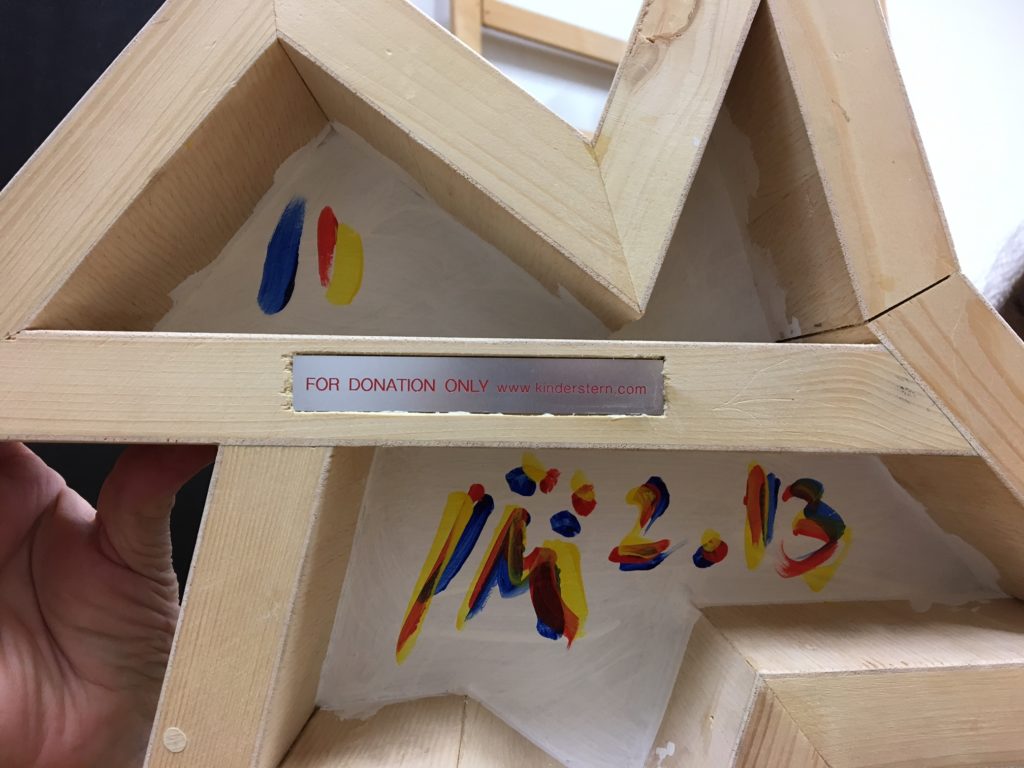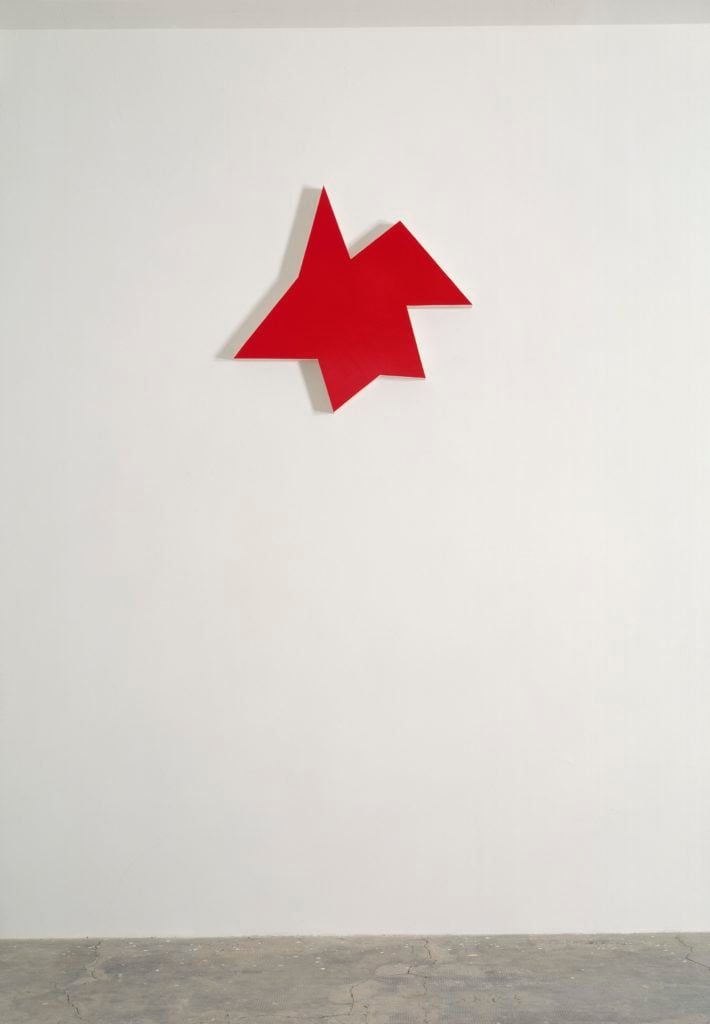Law & Politics
Imi Knoebel Issues Warning to Collectors Not to Buy His ‘Star’ at Auction
You can get them for much less directly from his charity.

You can get them for much less directly from his charity.

Hili Perlson

Renowned German minimalist Imi Knoebel has issued a statement denouncing the circulation of his special project Kinderstern (Star for Children) in auctions. “Please never bid on a ‘Kinderstern'” reads a message on the website kinderstern.com, where the work can be attained against a one-time donation of €5,000.
“Despite our warning [on the back of the work] ‘For Donation Only,’ auction houses take advantage of bidders’ lack of knowledge,” the website warns, showing a picture of the plate that can be found on the reverse side of every such star.

The back of a ‘Kinderstern’ piece always has a plate indicating it is not for sale. Courtesy Kinderstern.com
“Who would bid if they knew that Imi Knoebel`s Kinderstern can be [bought for a good cause] here for a fraction of the [auction] estimate, and in any color they wish?” the message on the site continues.
In an email to artnet News, the non-profit Kinderstern points to a recent auction that took place at Los Angeles Modern Auction House on October 9, where two stars, one in red and one in blue, were estimated at $18,000-25,000, and sold for $20,000 and $17,000, respectively.
According to a Kinderstern spokesperson, the artist’s wife, Carmen Knoebel, had contacted the auction house twice asking the piece be removed from auction, to no avail.
“Instead of standing for Children’s rights, Kinderstern now also stands—against Imi Knoebel’s will—for [the] enrichment of individuals at the expense of children and art,” they told artnet News.
“The works are actually made for projects for refugee children from Afghanistan, Armenia, Iraq, Nigeria, Mongolia, Somalia, and Syria.”
This is not the first time the Kinderstern has ended up at auction. According to the spokesperson, in 2015, the organization contacted Phillips London asking that a yellow version of the star from 2013 be removed from their 20th Century & Contemporary Art Day Sale, slated for February 10, 2016. The request was ignored and the work sold for £17,500.

Imi Knoebel, Kinderstern comes in an unlimited edition and is available in different colors for a donation to the charity organization Kinderstern.com
The acrylic-on-wood star was first created by Knoebel in 1988 for a German children’s charity. That same year, a non-profit organization was founded, with headquarters in Düsseldorf, under the name Kinderstern/Star for Children.
The artist created the piece as a “social sculpture,” following the extended notion of art as formulated by his teacher, Joseph Beuys, in 1967. Since its inception, the charity has helped fund more than 20 projects for children in need all over the world.
Peter Loughrey, director of Los Angeles Modern Auctions told artnet News in an email, “We are aware of the circumstances surrounding the creation of these works and heartily applaud the generous contribution both from the artist as well as the donor.”
“However, even if a work of art ‘is made especially for donors,’ it is still nevertheless a work of art; essentially becoming personal tangible property and therefore subject to market demand. To say that these works are not subsequently valuable on the secondary market is to say they are not works of art,” he added.
As such, they can be legally transferred for prices determined by market forces.
According to artnet’s Price Database, the market for Knoebel’s works is healthy, with his acrylic-on-wood painting Grace Kelly, from 1989, selling for £365,000—more than triple its highest estimate—at Christie’s Post-War & Contemporary Art Evening Auction in London, on October 6.
“Our only chance lies in the media willing to support Kinderstern and protecting art collectors by spreading the information,” the spokesperson told artnet News.